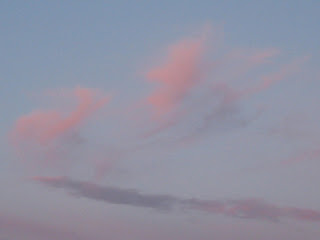
At this time in the summer, there are areas of grassland that are not being grazed. Sometimes a small field is allowed to rest until autumn. In the bigger meadow, we did not spray the buttercups this year. Nowadays, I hate to see the spraying of old pastures with herbicide of any kind. As the buttercups finish flowering, they gradually die back and grasses and other flowers begin to grow once again. We use an electric fence which is gradually moved through the pasture over several months. This is a good way to allow wild plants to grow and to prevent the ponies from getting too fat.
Above, is a small wild geranium, growing on bare soil at the edge of the meadow. The flower is smaller than Herb Robert. It may be Common Storksbill, but I`m not convinced about the leaves.
Below is Common Centaury, which is not common at all! I have occasionally seen it growing on roadsides in the New Forest, but one year it suddenly appeared in our field and the little colony has grown, year upon year. There is a legend that it was used by Centaurs ( half man-half horse creatures of Greek mythology) as a herb to heal the wounds of battle. I have noticed that the ponies and wild rabbits do not seem to eat it, so the taste must be bitter.
In the long grass at the end of the Golden Pony`s field, are a few tall Meadow Thistles. When her electric fence reaches the thistles, she will eat them with relish, prickles and all, For now, they are host to honey bees, bumble bees and ..........
Living on the edge.
Meadow grasses are seeding now.
At the field edge there are Scarlet Pimpernels among the short grasses. They were known as the Poor Man`s Weather Vane. When the flowers are open, the weather is fine. If the flowers are closed, it is raining, or about to!
A single plant of Prostate St John`s Wort, with its tiny yellow flowers. A new arrival this year.
Self heal flowers against a backdrop of Ground Ivy leaves at the hedge bottom. The ground ivy flowered its small purple blooms in the spring.
Here it comes again....More Ragwort rosette appear. We dig out traces of this poisonous plant every week, but it always seems to be one step ahead. The roadsides of Hampshire are covered in its yellow flowers this summer, so more pasture will be seeded by its airborne seeds next year.
Smooth Sow Thistle in flower.
A Gatekeeper butterfly on white clover...
...and red clover growing as the buttercups die back.
In the bonfire patch, where the earth was scorched bare by a bonfire in spring, Yarrow is thriving.....
....and so are thistles. Small flocks of goldfinches have been feeding on their seeds this week.



























































